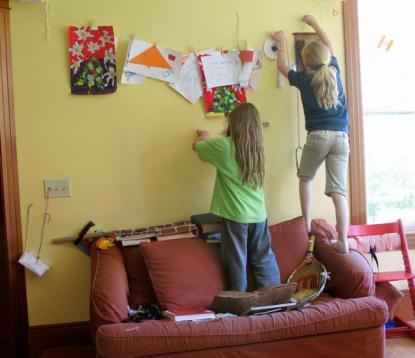
Remy is the (then longhaired) boy; Emily is the girl; they were creating a contraption with string
When you talk about gender norms and small children, the phrases “girly girl” and “boy” roll around between people like leaves across the lawn in October in New England. The boys wrestle. The girls like sparkly things. It’s how they are or what they do or what they like.
Then, you get some ‘but’s’ going. My middle two boys loved trucks and construction, but they wanted to grow their hair long. The long hair didn’t conform. We added that ‘but’ constantly.
Deborah Siegel in her fantastic and wise TED talk on pink and blue from the perspective of a scholar about gender handed the ultimate laboratory study—boy-girl twins—challenges the binary; she argues against the ‘but.’ She argues in favor of watching how children long before they are cognitively conscious of gender do whatever the heck pleases them. Toddlers, she says, are gender-benders.
What if, rather than pink or blue, she wonders, we got to purple? Rather than ‘but’ we could shift to ‘and.’ No to be overly dramatic or anything: every parent of a small child (or expecting one) really should watch her talk; she offers us all a chance to question our assumptions every which way and let kids be kids, which is the point of this whole nurture notion, right?


